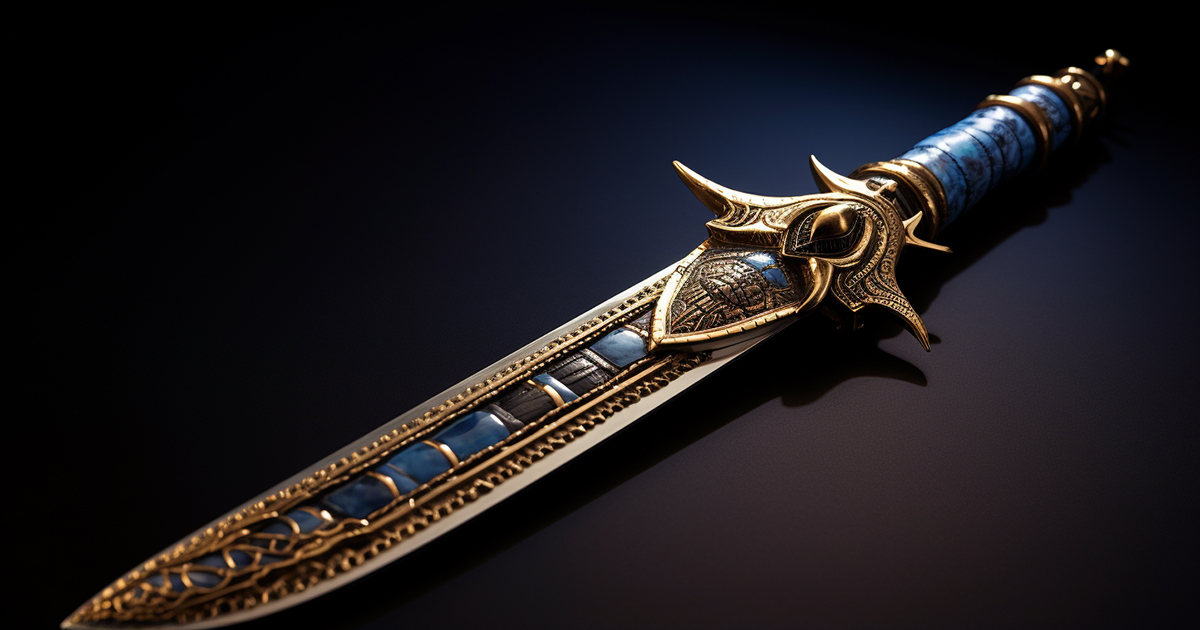Back in 1923, the world was left spellbound when the tomb of King Tutankhamun was unearthed on the 16th of February in the Valley of the Kings in Egypt, a groundbreaking moment for archaeology.
Under the leadership of the daring explorer Howard Carter, a British expedition team ventured into a hidden chamber sealed for over three thousand years, stumbling upon a collection that left them in awe.
Among the treasures carefully placed in the tomb, one extraordinary item stood out – a meticulously crafted 13-inch iron dagger, snugly encased in a golden sheath adorned with an intricate feather design.
More than just a visually striking piece, the dagger held a significance that went beyond its appearance, particularly due to its placement on King Tutankhamun’s thigh.
During the ancient period of 1330 BC, this dagger was not just a royal accessory; it was believed to contain divine powers bestowed by the gods themselves.
It was considered an essential tool for King Tut’s journey into the afterlife, where he was tasked with aiding the sun deity Ra in his nightly battle through the perilous underworld.

As Ra navigated the dark and dangerous depths filled with menacing entities, King Tut’s dagger served as his shield against the looming threats.
Although the concept of an iron dagger possessing mystical and spiritual properties may seem baffling in modern times, it was a firmly established belief in ancient Egypt, elevating it beyond its physical form.
The artifact’s enigmatic origin added another layer of intrigue, a puzzle that confounded historians for centuries.
During Tutankhamun’s era, Egyptians did not have the knowledge to produce iron, making the dagger’s iron composition even more mysterious.
Recent scientific studies have unveiled that the dagger’s iron came from a meteorite, descending from the heavens to Earth, linking it to divine origins in Egyptian cosmology.
The notion that King Tut’s dagger possessed otherworldly powers due to its extraterrestrial nature sparks fascinating debates, with some proposing that its spiritual significance goes beyond mere symbolism.
By pointing to a succession of mysterious deaths following the removal of the dagger from King Tut’s tomb, a narrative reminiscent of the ancient curses tied to disturbed pharaohs’ final resting places begins to surface.
The strange deaths that occurred after the dagger’s extraction are veiled in eerie circumstances, reinforcing the belief in a doomed fate for those who tampered with the pharaoh’s possessions.
The demise of Lord Carnarvon, the expedition’s patron, merely four months after the tomb’s unveiling, due to an uncommon form of blood poisoning, marked the start of a series of premature deaths among team members.
According to proponents of the curse hypothesis, the dagger, intended for King Tut’s protection in the afterlife, harbored a mysterious force that was unleashed upon its removal by unsuspecting excavators.
Amidst the speculation surrounding the curse, the dagger assumes a crucial role, intertwining with the tragic destinies of those who encountered it.
Video:
While the puzzle of King Tut’s dagger persists, presenting a captivating enigma, one fact remains clear: it offers insights into the complex beliefs and customs of ancient Egypt. Whether seen as a celestial offering or a representation of spiritual protection, the dagger’s tale mirrors humanity’s enduring fascination with the unexplained and mystical facets of history.
